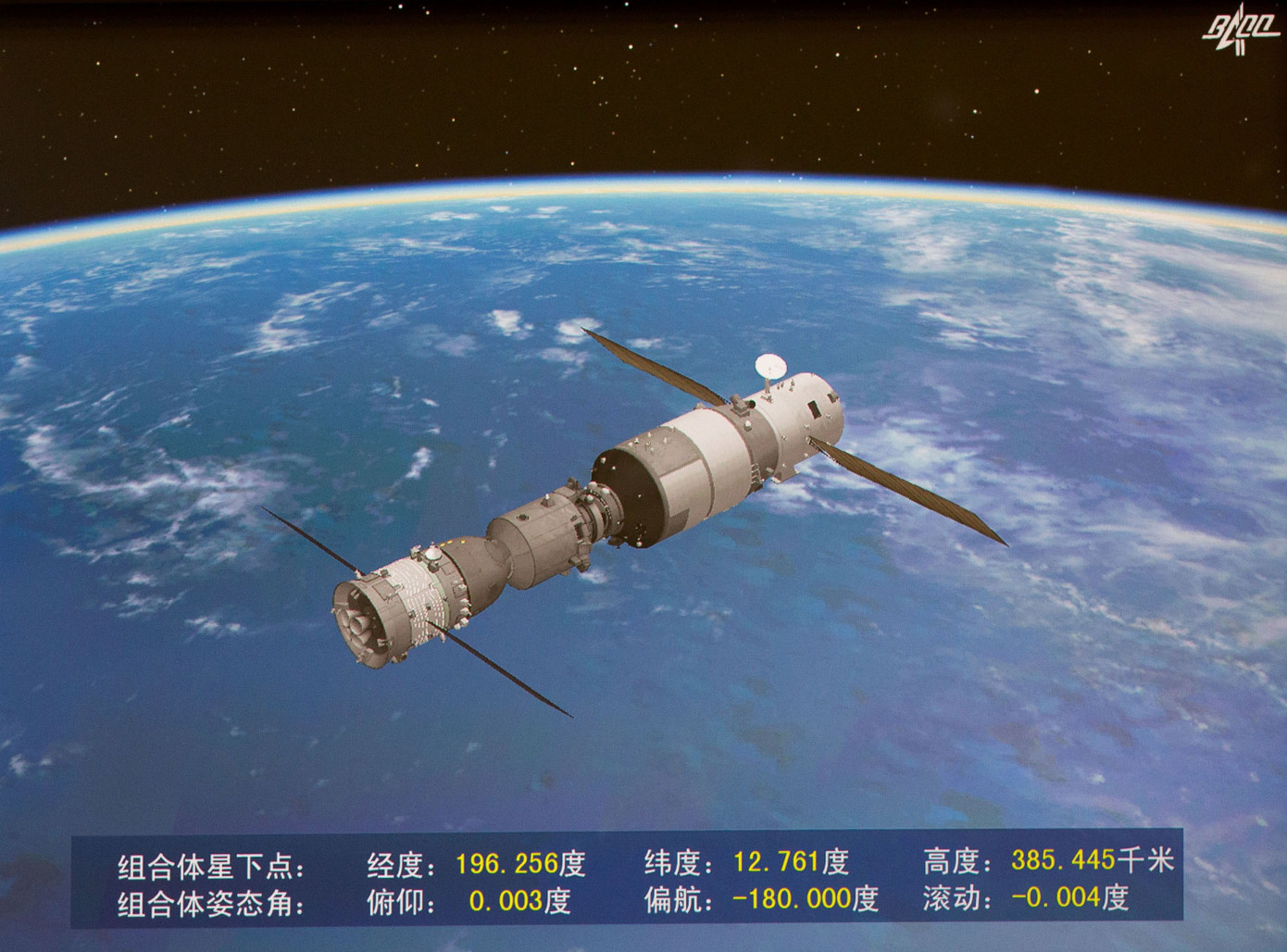Chinese Space Station Tiangong-2 Destroyed in Fiery Re-Entry Over Pacific Ocean

A Chinese space station fell out of the sky today (July 19), according to Agence France-Presse. But unlike the last time this happened, China was in control the whole time.
The Chinese National Space Administration (CNSA) said in an earlier statement that Tiangong-2, the country's second experimental station, would "leave orbit and re-enter the atmosphere." At 34 feet (10 meters) long and 19,000 lbs. (8,600 kilograms), the orbiter was a bit larger than a northern bottlenose whale — though the station's solar panels made it a bit of an odd-looking whale, with a 60-foot (18 m) wing span. CNSA said Tiangong-2 would burn up almost entirely in the atmosphere, before any remnants crashed into a remote part of the Pacific Ocean called Point Nemo.
That's a very different situation from the demise of Tiangong-2's predecessor, Tiangong-1, which fell uncontrolled from orbit on April 1, 2018 (though, coincidentally, Tiangong-1 ended up in nearly the same part of the Pacific). [Gallery: Tiangong-1, China's First Space Laboratory]
CNSA officials said Tiangong-2 had completed all of its experiments and exceeded its planned two-year operational life by more than a year. The station hosted only one set of astronauts, back in October and November 2016, but it had since hosted several robotic missions, as Live Science sister site Space.com reported.
- Amazing Moon Photos from NASA's Lunar Reconnaissance Orbiter
- Death by Asteroid: The Most Likely Ways for a Space Rock to Kill You Way to Be Weird, Earth: 10 Strange Findings About Our Planet in 2018
Originally published on Live Science.
Get the world’s most fascinating discoveries delivered straight to your inbox.



